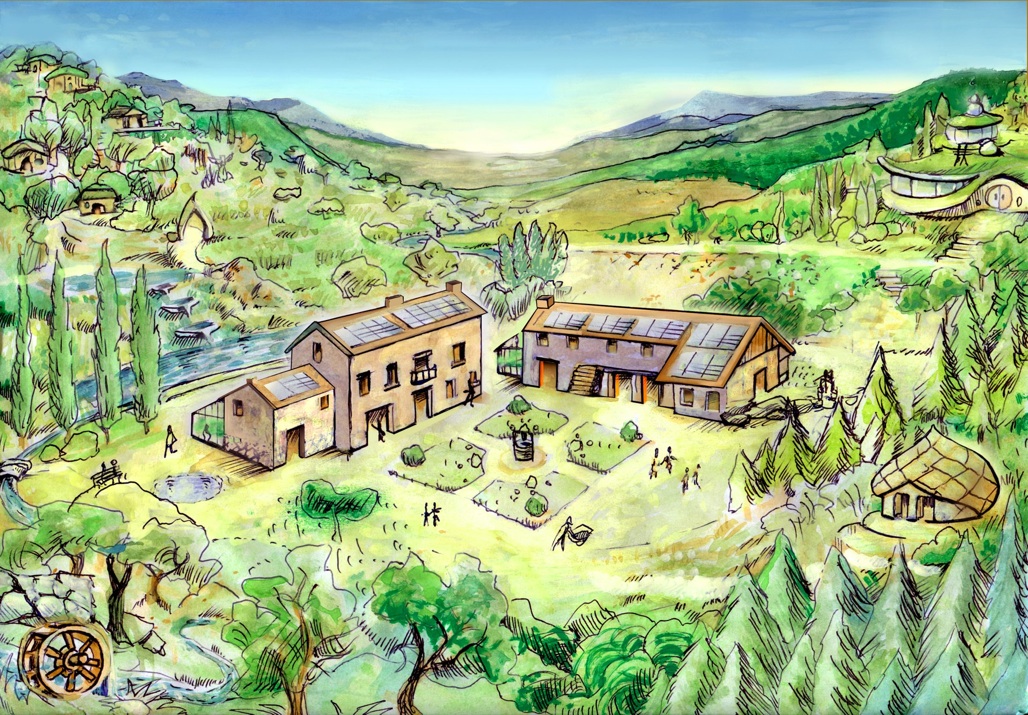A Quick Guide to Syntropic Farming
- 2023-03-16 06:58:24.0
- 3803
- syntropic farming
Planting trees versus planting forests
Trees planted next to each other not automatically become a forest. They do not
even connect or interact with each other in many cases. Trees of a certain age do
not harmonize with species of other ages when all planted the same time. They also
lack the shading and feeding "mothertrees" above them. Trees have specific needs
for light or shade, so many die off quickly in a tree planting due to the exposure to
the full sun.
When trees grow naturally in a forest, they follow a certain timeline and have a
specific lifecycle. If not all life cycles are represented, the system gets stuck in
evolution and becomes weak and vulnerable.
Especially tree monocultures do more harm than good, as they change the
microclimate and are prone to fires and pests. On the social side, encouraging tree
planting, especially in third world countries, potentially takes away arable land for
food production and threatens local livelihoods.
A forest on the contrary is a living being, a functioning ecosystem with countless
actors above and below soil. A forest is a dynamic, evolving, resilient and
interconnected system of high complexity. It starts on bare ground where the first
colonizers prepare the soil for the following species and they again work to create
the living conditions of more demanding species.
A forest is grown using nature's powerful process of natural succession which
constantly increases the quantity and quality of consolidated life. It seamlessly
integrates the lifecycle of each species, its needs for nutrients, light or shade.
Each actor in the system fulfills a specific function to benefit the system as a whole.
As the system evolves, it increases its biodiversity in visible species and hidden in its
genetic code for the future forests evolving after a disturbance. The quality and
quantity of soil is growing and with it the fertility of the place. It is grown resilience.
Forests are the wombs of springs; they host and clean our drinking water.
Furthermore, forests are climate active in the way they shape the water cycle above
and below ground. And yes, they sequester carbon as well. As without water, carbon
will not be stored sufficiently.
Forest planting versus Syntropic Farming
And here is where Syntropic Farming comes into the picture. With this land use
method, forests are grown as productive agro-ecosystems, following nature's
dynamics while providing food, medicinals, timber, fibers and ecosystem services
such as carbon sequestration, clean water, clean air etc.
Did you know that we could replace all fossil fuel-based materials and grow
alternative raw materials in Syntropic Farming?
Thanks to the planting along nature?s successional timeline, high density of species
allows it to grow more on less land while needing less to zero irrigation.

However, despite their importance, approximately 29% of Earth's seagrass ecosystems have been lost globally. With annual global losses of around 1.5%, they are among the world's most threatened ecosystems; this rate has been increasing in recent decades. Such losses are due to major threats, including deforestation and dredging, which degrade water quality due to poor land use.
Other drivers of conversion and degradation include aquaculture, urban and industrial coastal development, and marine and terrestrial sources of pollution. While the cause may vary, they are all driven by human activities. As climate change continues to be a threat, these impacts are expected to intensify.
Why integrate trees in agriculture?
In Syntropic Farming, we work with crop trees, noble timber and servicetrees,
usually wild species that are added due to different, valuable functions they fulfill.
They also are a bridge to the natural ecosystems. Some of them are fast-growing
and provide shade to the upcoming saplings of slower species. They are great
sources of biomass which is added as "food" to the system. A regular pruning of
servicetrees, stimulates growth in the whole planting.
Their soil building ability is important as they partner with huge networks of fungi
and bacteria that improve the soil structure, -quality and water-holding capacity.
They reach deeper soil areas and are bringing vital minerals to the surface. Due to
their photosynthetic capacity, they are major contributors to the liquid carbon
pathway into soils.
Trees change the microclimate of a field. They break wind patterns and release
water into the air due to their photosynthetic process.
Wind is a major factor in humidity- and topsoil loss, especially over bare ground.
Science also discovered the ability of trees to create their own rain using
bioprecipitation.
Some species act like water pumps bringing more humidity to the surface. As we
plant trees in high density, we create a future forest ecosystem that improves the
local water cycle.
When developing large areas with Syntropic Farming from shoreline going inland, we
are even able to rejuvenate the biotic pump, a conveyor belt of humidity in the lower
air layers, which brings fertility and humidity to the centers of continents.
Trees also increase the economic value of a field in the longer run, next to crop
species especially noble timbers are of interest.
There are numerous species, which combine crops and timber. Trees also minimize
migration ? farmers do not leave their timber; it is an economic value planted on the
field.
What is Syntropic Farming?
Since more than 40 years, a Swiss researcher and farmer by the name of Ernst
Götsch has developed a nature-imitating farming technique he calls "Syntropic Farming".
In 1944 the Italian mathematician Luigi Fantappič defined the term "Syntropy" to
describe the ability of living systems to align towards a better, more resilient
organizational setup in the future. A setup where life is conducive to life. Where life
creates conditions for more life to thrive. Where the quantity and quality of life
grows over time.
In comparison to its complementary force - Entropy - that describes the diffusion of
energy - Syntropy concentrates energy. It organizes itself in higher and higher
complexity thereby reducing energy diffusion.
Syntropy is - one could say - the driving motive and engine behind biodiversity.
Ensuring thrivability and abundance while creating living systems that are robust
and adaptable to disturbances and change.
This can be well observed when disturbances in a landscape happen - the process
of regeneration starts immediately, the "wound" is closed and the system develops
into a complex macro-organism in the form of a forest.

If mankind would not be on this planet, all suitable pieces of land would be forest.
So, Syntropic Farming uses this powerful life process to create productive macro-organisms that are - as their natural role model - independent from external
inputs.
It does not need:
- External fertilizers
- Fungicides
- Pesticides
- Herbicides
- Irrigation
As studies show - this technique changes the microclimate and is able to "grow its
own water" - or as Ernst Götsch calls it: "Water has to be planted".
On his own farm he regenerated long dried-up wells, changed the soil quality
dramatically and "recycles" 180 - 200 tons of organic matter per hectare per year.
Some studies show a productivity of 80 tons of crop/hectare/year - no conventional
farming is able to reach such a high productivity in yields. Yet yield is a concept that
might need changing ? as pure volume does not express quality. Nutrition per
hectare is way higher with this method.
Syntropic Farming works with heavy, yet specific mulching to keep ground
temperatures cool. It is - compared to conventional farming - four dimensional. The
agro-ecosystems are created in length, width, height (strata/layer) and along the
timeline.
It means that a farmer can start to harvest first species as early as three weeks after
a system has been set up and then has constant yield as time goes by.
It is complex in design and the initial setup needs manpower - yet the benefits of
the system outweigh this tenfold.
Syntropic Farming techniques work from small to real large scale and in all climate
zones and soil conditions.
The farms grow their own fertilizer by using fast growing, well adapted trees in the
so-called A-Lines, together with crop species. They are pruned regularly to feed the
system with organic matter and to give it growth impulses. Grasses are well wanted
agents in Syntropic Farming as they are a growing machine for mycorrhizal fungi and
great and easy to manage biomass. In order to weave it into existing, local forests,
the planting of native species amongst the crop trees is a common practice.


